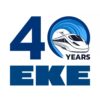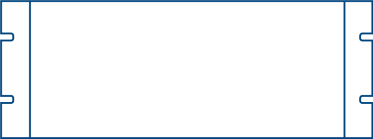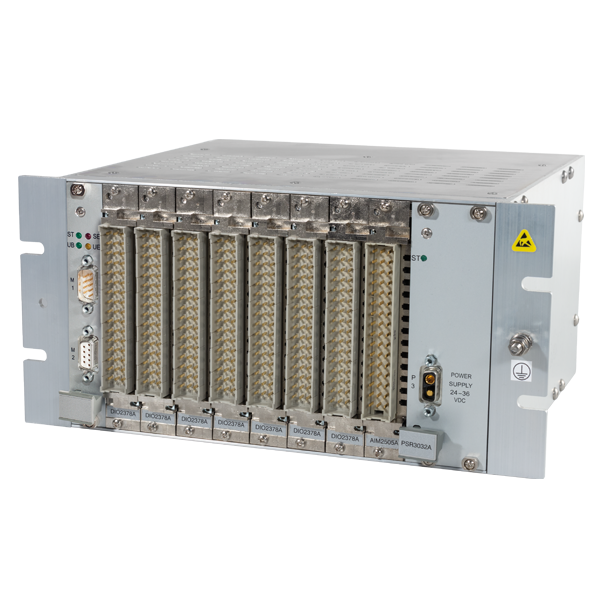
Remote Input Output Systems
EKE-Trainnet® Remote Input Output Systems provides efficient data input and output management with support for analogue and digital I/O. This minimises cabling complexities while ensuring flexibility and optimised system performance.
The Remote Input Output Systems can connect with sub-systems and the Train Communication Network. These control and diagnostics systems can run on the same train computer that is used for Gateway functionalities, providing a more compact and cost effective solution.

Build a Remote Input Output System using the following modules
The Remote Input Output System usually consists of a Central Processing Unit or MVB Interface, I/O modules, a power supply and a rack. Click on an image to explore related content.
Modular Concept
All our EKE-Trainnet® products are modular, enabling you to precisely select the modules you require. Modules can be combined for a very flexible and versatile solution. The modular design enables you to select only the features you need for a cost efficient solution. It also means repairs and upgrades are quick and easy.
Below is an example of a Remote Input Output System made up of a selection of common modules. Hover over each area to view a brief description or click to access the full module page.
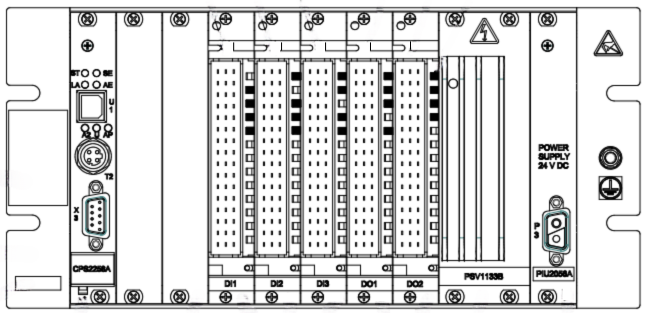
CPU with Serial Links (CPS)
A central processing unit providing serial communication interfaces.
I/O Modules
Choose from our range of I/O modules. In this example, Digital Input Output Modules are used.
Power Supply Unit for VME (PSV)
Provides power to the system.
Power Input Unit (PIU)
Used to pass train battery voltage to the EKE-Trainnet® Power Supply Unit for VME (PSV) module
Wide range of input output modules
Digital Input/Output
- 24 Input channels
- 8 input/output channels
Digital Relay Output
- up to 8 relay outputs
Digital Solid State Outputs
- 8 solid state outputs (only available by request)
Analogue Input
- 10 voltage channels (AIM)
- 10 current channels (AIM)
- up to 16 voltage channels (AIO)
Analogue Output
- 16 output channels (in 4 groups of 4 isolated channels)
High Speed Analogue Input
- 4 voltage channels
- 4 current channels
Pt100/Pt1000
- up to 6 measurement channels
Temperature Sensor Input
- up to 6 measurement channels
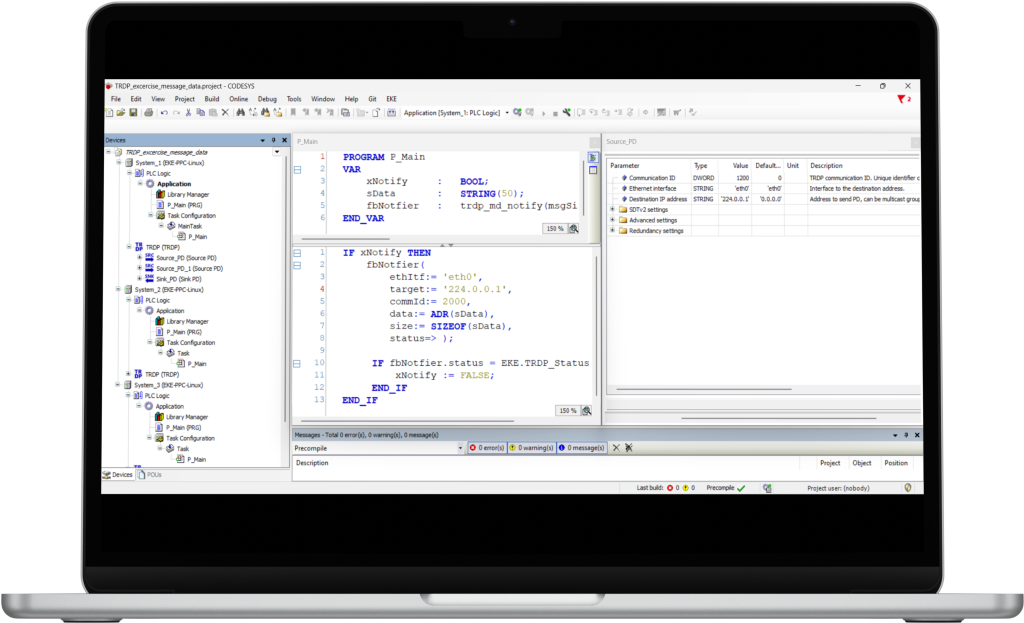
Build Your Own Applications
EKE-Trainnet® Remote Input Output System is built on an open-source Linux platform powered by CODESYS®. It allows you to develop custom applications.
If you prefer to develop in-house. EKE-Electronics provides training, tools, and guidance to support your development efforts. Alternatively, EKE-Electronics has expertise to develop fully or partially software on your behalf.
Why Choose EKE-Electronics for Remote Input Output Systems?
Engineered for excellence in rail technology, EKE-Trainnet® Remote Input/Output System supports SIL 2 development. Our system is designed to seamlessly integrate into your operations, providing the reliability and advanced capabilities needed for efficient and effective control.

Very high I/O density
Designed with a very high I/O density, the EKE-Trainnet® Remote I/O System accommodates numerous signals within a compact space. In a standard 3U, 84TE rack, it can include up to 576 digital I/O channels (18x32ch).
This high density is crucial for high-speed trains and Electric Multiple Units (EMUs), offering space-saving benefits, a decentralised network architecture, and simplified I/O cabling, which ultimately reduces costs.
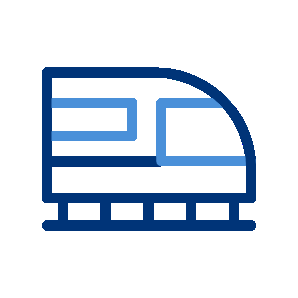
Support for serveral vehicle buses
Supporting multiple vehicle buses, the EKE-Trainnet® Remote I/O System excels by managing several identical or different buses simultaneously. This capability simplifies the train design process, allowing for a more streamlined and efficient system architecture.
By integrating various buses into a single system, enhances flexibility and reduces complexity, making it an ideal choice for modern rail applications.

Dual homing with TRDP
EKE-Trainnet® Remote I/O System features dual-homing with Train Real-Time Data Protocol (TRDP), ensuring unparalleled reliability and continuity.
This dual-homing capability provides redundant pathways for data communication, safeguarding against potential failures and enhancing system stability.
Ideal for high-speed and critical applications, this feature ensures uninterrupted performance and dependable operation for your train systems.
